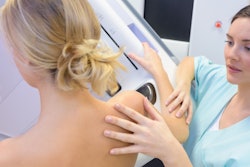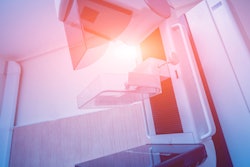
Do financial conflicts of interest influence clinical practice guidelines or society recommendations for screening mammography? Not really, according to a study published in the November issue of the Journal of the American College of Radiology.
The results further illuminate a hotly debated issue -- that is, the efficacy of screening mammography, wrote a group led by Tyler Combs of Oklahoma State University in Tulsa.
"Our findings support the notion that financial conflicts of interest are equally rare among authors of guidelines advocating conservative screening regimens as well as guidelines that support earlier or more frequent screening," the team wrote.
A number of professional organizations have published recommendation statements or clinical practice guidelines for breast cancer screening, and because of the important role guidelines play in clinical decision making, it's crucial that they be developed without bias, the researchers wrote (JACR, November 2019, Vol. 16:11, pp. 1598-1603).
So Combs' team assessed the link between seven current breast cancer screening guidelines and any payments received by 43 authors, gathering data on industry payments authors received using the U.S. Center for Medicare and Medicaid Services (CMS) Open Payments database. The study included recommendations from the following groups:
- American College of Radiology (ACR)
- American Cancer Society (ACS)
- American College of Obstetricians and Gynecologists (ACOG)
- American College of Physicians (ACP)
- International Agency for Research on Cancer (IARC)
- U.S. Preventive Services Task Force (USPSTF)
The researchers found that 67% of authors did not receive any industry payments for writing breast cancer screening guidelines, while 33% did. They also found the following:
- 9% of authors declared at least one significant financial conflict of interest.
- 12% received more than $5,000 from a single company in a single year.
- 2% received more than $5,000 from a single company in a single year associated with a product or device used in mammography screening.
| Prevalence of financial conflicts of interest among authors of screening mammography guidelines | |||
| Guideline source by year | Total authors | Paid authors | Authors with significant financial conflicts of interest |
| ACR high risk (2018) | 6 | 17% | 0% |
| ACR average risk (2017) | 8 | 13% | 13% |
| ACOG (2017) | 4 | 25% | 0% |
| USPSTF (2016) | 14 | 36% | 0% |
| ACS (2015) | 7 | 43% | 0% |
| ACP (2015) | 3 | 33% | 0% |
| IARC (2015) | 1 | 0% | 0% |
"Our study found that fewer than one-third of authors of breast cancer screening guidelines have received industry payments of any denomination and that the majority of these payments were small and unrelated to the topic of breast cancer screening," the team wrote.
Finally, Combs and colleagues cautioned that financial incentives can go the other way as well.
"It must be considered that less robust screening recommendations advocated by organizations such as the USPSTF could theoretically be driven in part by influences from healthcare payer sources, whose true motives may be cost saving in nature but are presented under the guise of quaternary prevention or harm reduction," the team concluded.




















